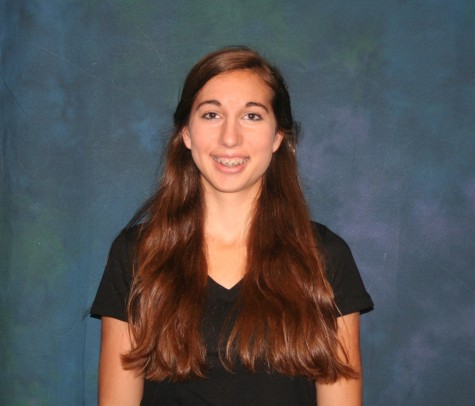Adrenaline rushing, hearts pounding, crowd cheering; it’s game time. With sweat dripping, players anticipate a single sound. Cleats grip the turf as players sprint across the field.
The game takes way. As fans gather around to watch two teams face off, the focus is all on the players. The field is often an afterthought. The setting for the game is what makes it all possible. The facilities allow a sound level of play, whether they are a field, a pool, or a gym. Behind each of these facilities is a name: Howard C. “Hod” Ray, Norton Thornton Sr., George Frank Hurley and George S. Stewart.
The namesake of Paly’s football field, Hod Ray joined Paly’s athletic department in 1921 and he stayed at Paly until he passed away 30 years later.
Ray led the football team to its first ever Peninsula Athletic League (PAL) championship, a newly formed league at the time. During his football coaching career, the football team won a total of eight PAL championships and 17 second place finishes.
In addition to coaching football, Ray coached basketball, track, swimming and baseball. He led the track team to four PAL championships and an overall 42-16 dual-meet record. His basketball team won twelve PAL championships and his baseball teams won a total of six league titles. On top of coaching the various sports at Paly, Ray also taught Physical Education from 1937-1951.
Although Ray enjoyed basketball the most, he was most known for his coaching success with the football team. From 1950-1951 he led the team to back-to-back perfect seasons.
Unfortunately, only a few weeks later, he died of a heart attack on the morning of Dec. 17, 1951. Ray had suffered from a heart attack in late 1945, but he had continued to coach even though doctors recommended he stop.
Before his death, the football field was named after Ray in 1937. That year he had coached the team to a 10-0 record.
In an article, Hod Ray: Mr. Paly sports, written by Dave Kent in the Palo Alto Weekly from 1980, a player of Ray’s from the 1940s, named Bill Simons, spoke about Ray as a coach.
“He taught clean sports and held that ideal above everything else,” Simons said. “He would never tolerate any cheap shots by his players.”
Swimmers, water polo players, and divers would be lost without a pool. Paly is fortunate enough to have a pool and this pool is dedicated to historic coach, Norton Thornton Sr.
He was born in England and came to the U.S. in 1914 during WWI. He graduated from Stanford University in 1930.
Thornton was a goalie on the All-American water polo team from 1928 to 1930. He was picked to be an alternate on the 1928 American Olympic Team and was elected to the American Water Polo Hall of Fame in 1994.
Two years after he graduated from Stanford, he decided to return, to coach swimming and water polo.
During the interim years he coached swim teams at Menlo Junior College.
Eventually, Thornton moved on to coach at Mountain View High school in 1942. Three years later he made his way to Paly.
Thornton coached water polo and swimming at Paly, as well as three physical education classes, a history class, and a hygiene class. He also coached basketball. He continued coaching until 1960.
His son, Norton Thornton, followed his father’s coaching career. He was the Men’s Swimming coach at the University of California, Berkeley from 1974-2007. He was elected to the International Swimming Hall of Fame in 1995 and the American Swimming Coaches Association Hall of Fame in 2002.
Another influential, historical figure at Paly was George Frank Hurley, otherwise known as “Coach Hurley.”The baseball diamond is dedicated to Hurley.
He was born in San Francisco in 1909. He graduated from Washington State University, where he was an All-American football player. He went to three bowl games. He then went on to play for the Boston Braves and the Washington Redskins in 1932 and 1933, as a guard.
Hurley coached basketball in the 1950’s. In addition to basketball, Hurley also coached football a few years later.
Earl Hansen, Paly’s athletic director, played football for Hurley in 1967 and 1968. In addition to coaching, Hurley was also a driving instructor. Hansen recaps a specific memory he had when Hurley was sitting in the passenger seat during one of his lessons.
“We were driving along Alma,” Hansen said. “In those days in driver training, they had a break on their side. I [was] driving straight, minding my own business and he was snoozing. All of a sudden he [woke] up and hit the break… I will never forget that, that was hilarious.”
Hurley was involved with Paly until his death in April of 1995.
“He was a good coach,” Hansen said. “He loved to get everybody involved and he was positive.”
Paly’s soon to be remodeled gym is dedicated to George S. Stewart. Stewart was Vice Principal of Paly from 1922-1953.
Additionally, Stewart coached lightweight track and basketball teams until 1932. He served as a commissioner of the PAL league and a secretary of the PAL Coaches’ Association up until his death. Similar to Ray, when Stewart was 57 years old, he died from a heart attack in 1953.
Watching the next Paly football, water polo or baseball game, one might focus on the players competing at hand or one might look past the game and think about the history behind it all.
Many people contributed to the construction of what makes Paly’s athletic program so highly praised; Ray, Thornton, Hurley, Stewart and so many more. Without these individuals, Paly would not be what it is today. <<<



